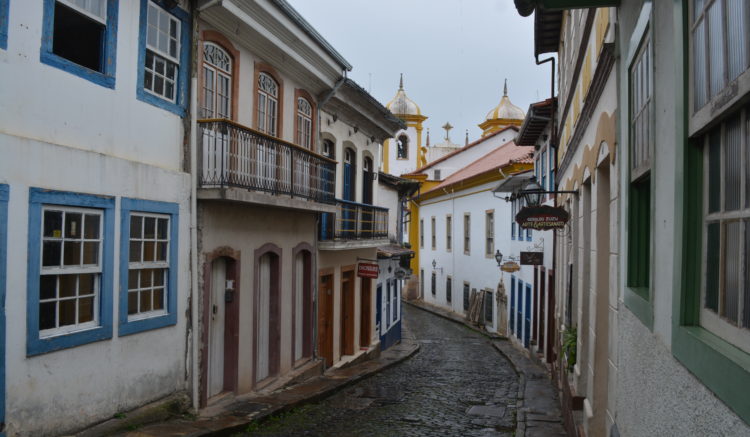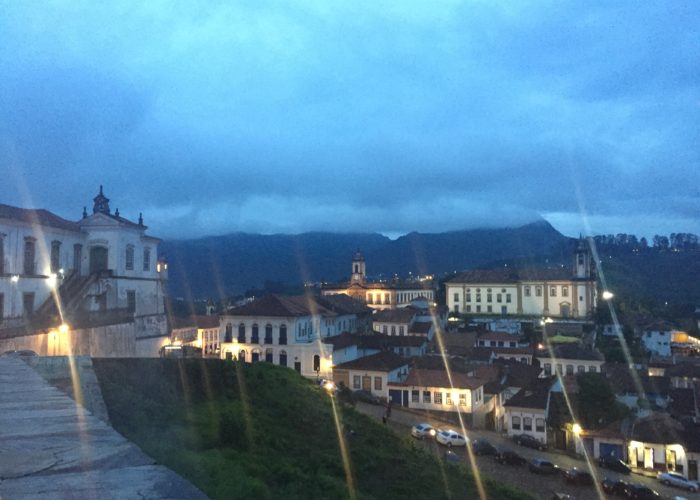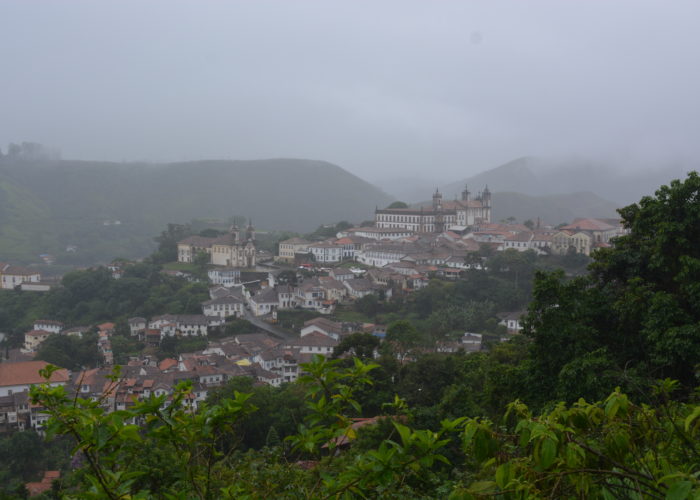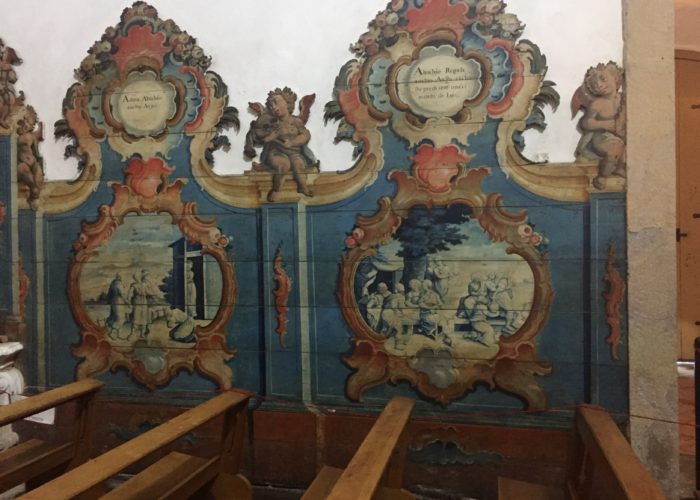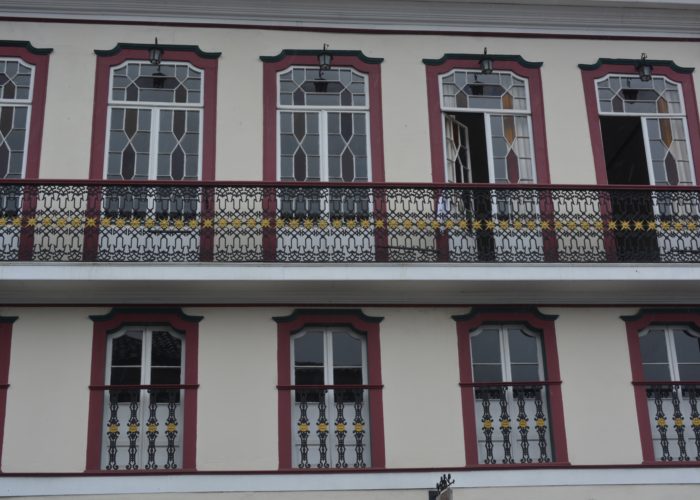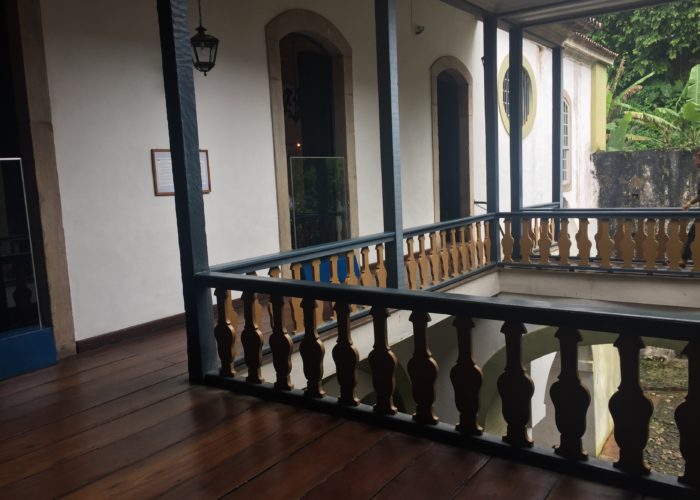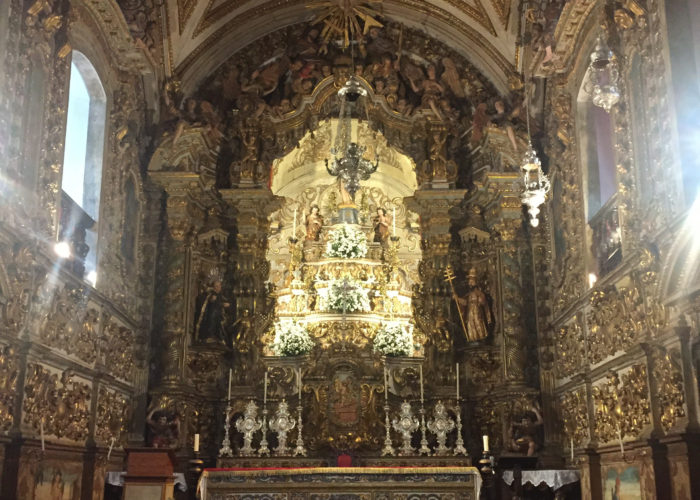From Brasilia we drove the 800+ kms to Ouro Preto, one of Brazil’s premier colonial mining towns in the heart of Minas Gerais State. Minas Gerais is one of the major mining and agricultural heartlands of Brazil and played a significant role in the development of Brazil. Ouro Preto is one of a number of elegant colonial towns that developed off the back of mining, and there were many mines right inside the town. Today the mines in the town have closed, but there is significant mining activity in the surrounding area. Minas Gerais means general mines and Ouro Preto, black gold.
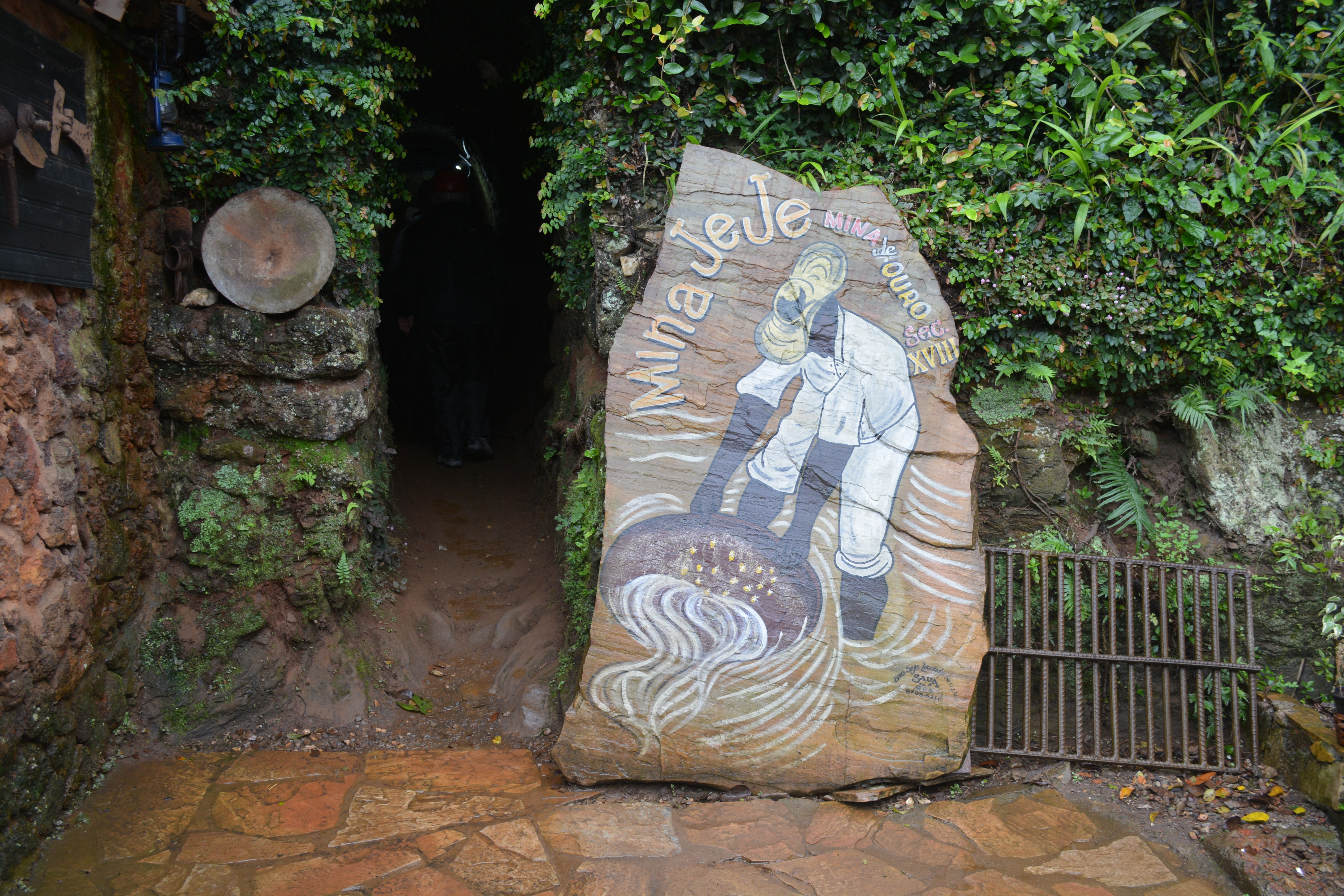
The gold mines brought enormous wealth to Ouro Preto and some of the wealth was retained in the town through taxes and tithes to the church. As a consequence Ouro Preto has some of the finest baroque art and architecture in Brazil. The town is built up a number of hills and has many steep cobbled streets. The surrounding area is very fertile, helped by the abundant quantities of rainfall. Our visit coincided with with the rainy season and in the almost nonstop rain, the cobbled streets resembled mountain streams. The rain and also the mineral wealth, which generates a high level of prosperity, helps keep the town very clean.
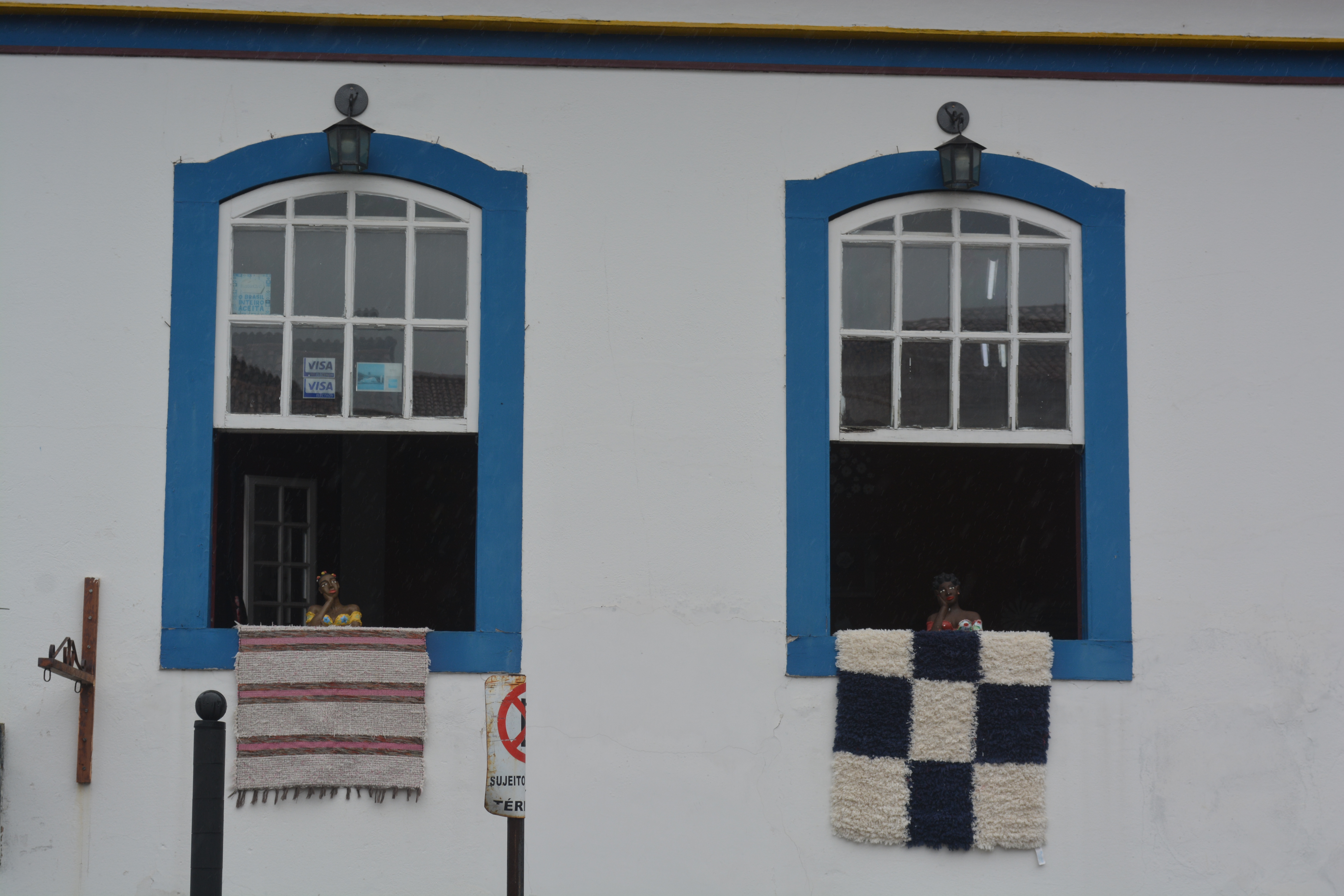
In the heyday of gold mining in the 1800s, Ouro Preto had a much darker history, in that many of the miners were slaves. The hard mining conditions gave excuse to extreme brutality to the slaves, especially in the selection smaller strong men who could work easily in the mines while others that did not fit this physical requirement were deemed surplus to requirements and often brutally dealt with. Brazil did not abolish slavery until 1830, but it was not properly enforced until the 1850s. However many mine owners did not know what to do with the slaves so many continued working in a similar way for many years. An old colonial house Casa dos Contos in downtown contains an important museum which chronicles the history of slavery in Ouro Preto. To complete the story, one of the old mines in the town, Mina JeJe takes in visitors down some of the old pit shafts to see what some of the conditions in the mines were like.

One of Ouro Preto’s most famous sons was Aleijadinho, the renowned sculptor and son of a Portuguese craftsman and a slave mother. His work is in evidence all over Ouro Preto and also the broader Minas Gerais State. Many of the churches in Ouro Preto contain some of his finest work, which became even more remarkable when he begun to suffer from leprosy and lost his fingers, but he continued to work prolifically with the chisels strapped to his wrists.
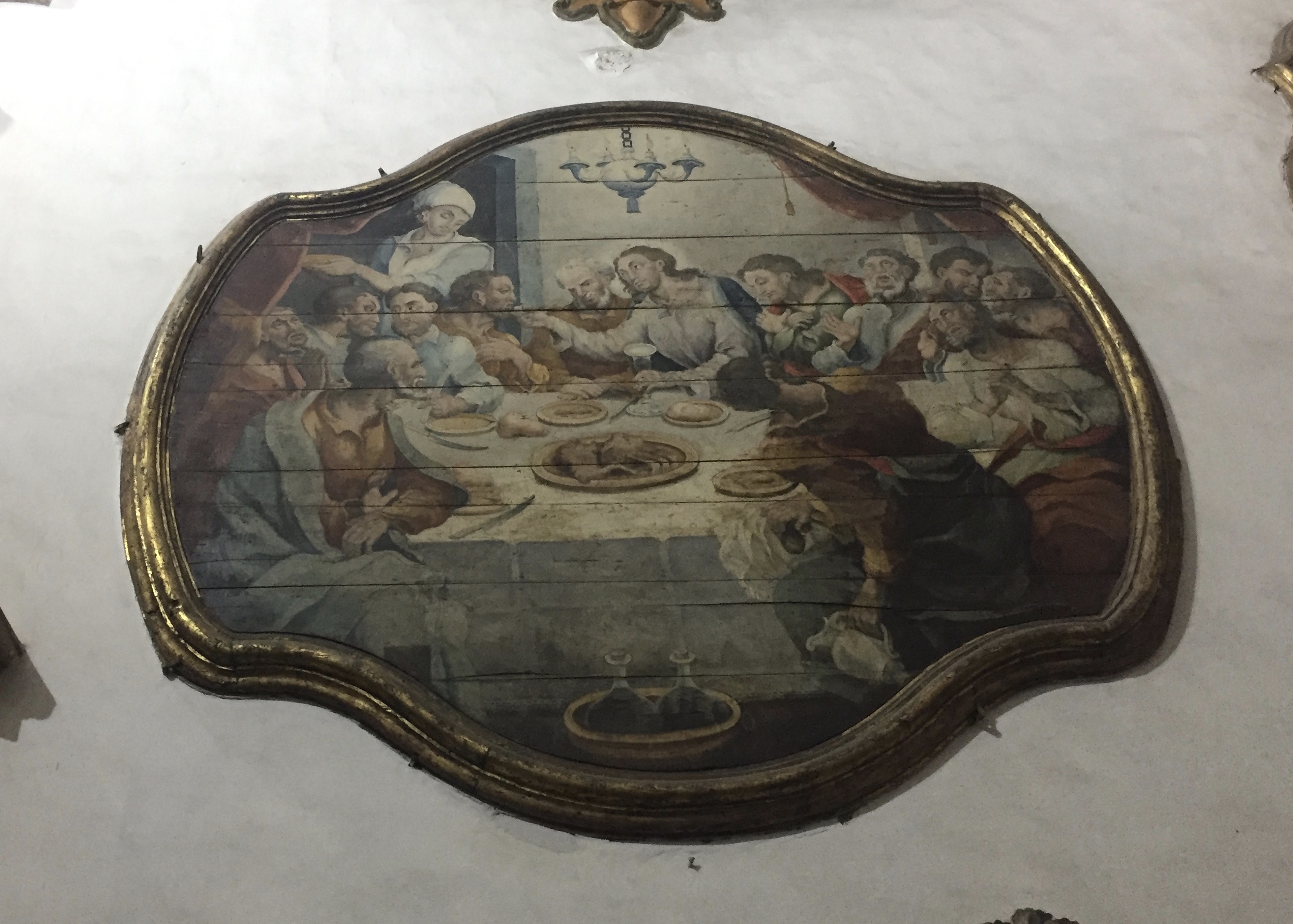
The Igreja de São Francisco de Assis is probably the most beautiful church in Ouro Preto and contains a significant amount of work by Aleijadinho. Particularly striking are the cherubs having noticeable African features and a painting of the Last Supper with pork on the table. With Aleijadinho being of mixed race and the hypocrisy of the Catholic Church especially when it came to it turning a blind eye to slavery, his art is a wonderful and subtle political statement.

Another of Ouro Preto’s finest churches is the Igreja de Nossa Senhora do Pilar. The church is very ornate and its interior is designed like a Rococo theatre. The nave is curved and has balconies in its upper levels, while the carvings on the walls and altarpieces are liberally covered in gold leaf. The Catholic Service can be likened to theatre and, the design of this church certainly emphasises this fact.
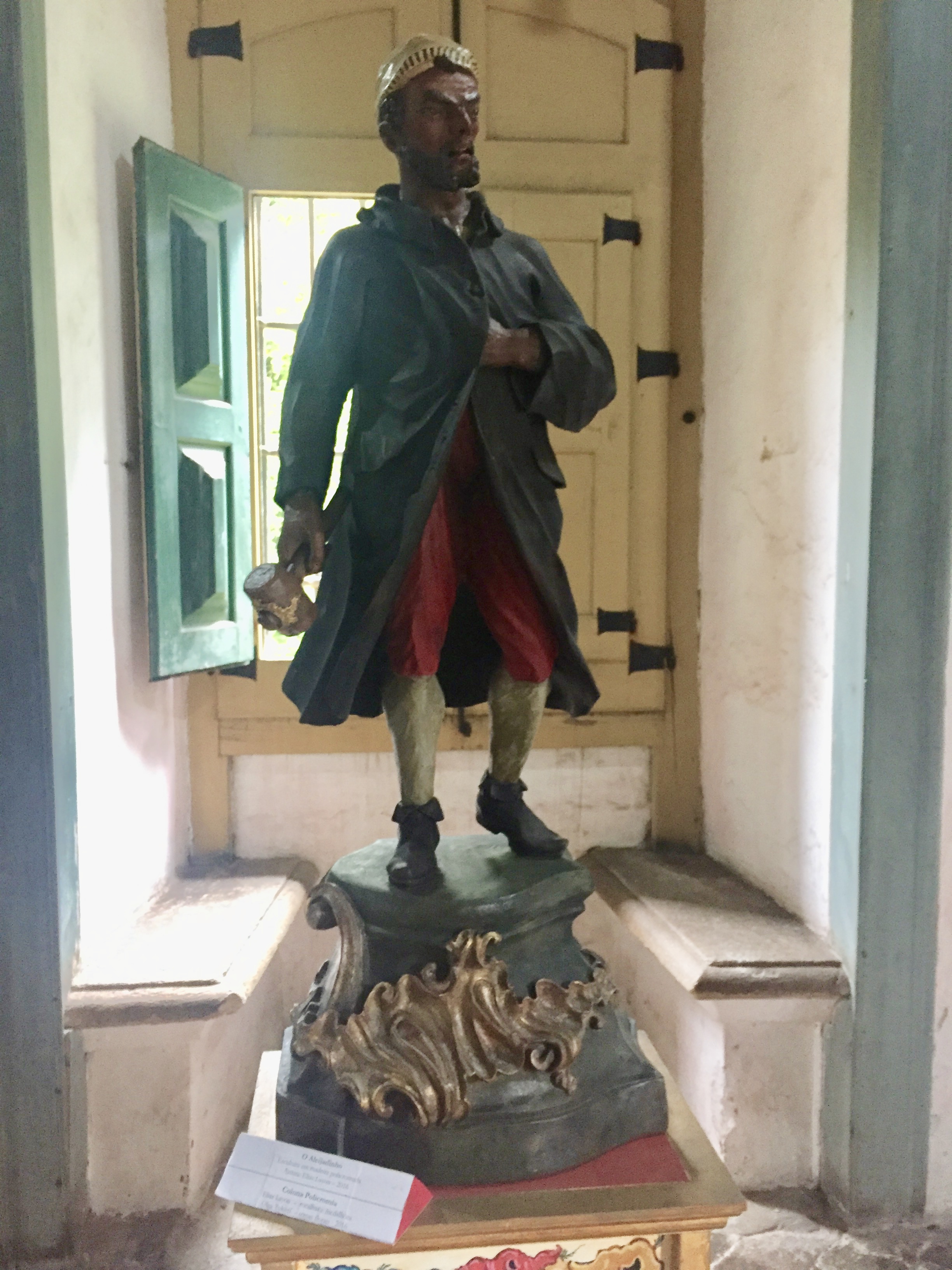
There are many other churches in Ouro Preto, and nearly all the commercial and residential buildings in the main town centre are all in the original colonial style. Indeed the town is probably one of the best maintained and preserved UNESCO towns in all of Brazil. However, there is one noticeable modern building in the town centre, a hotel, which was designed and build by Oscar Niemeyer, but as he is architectural royalty, everyone accepts this anomaly.
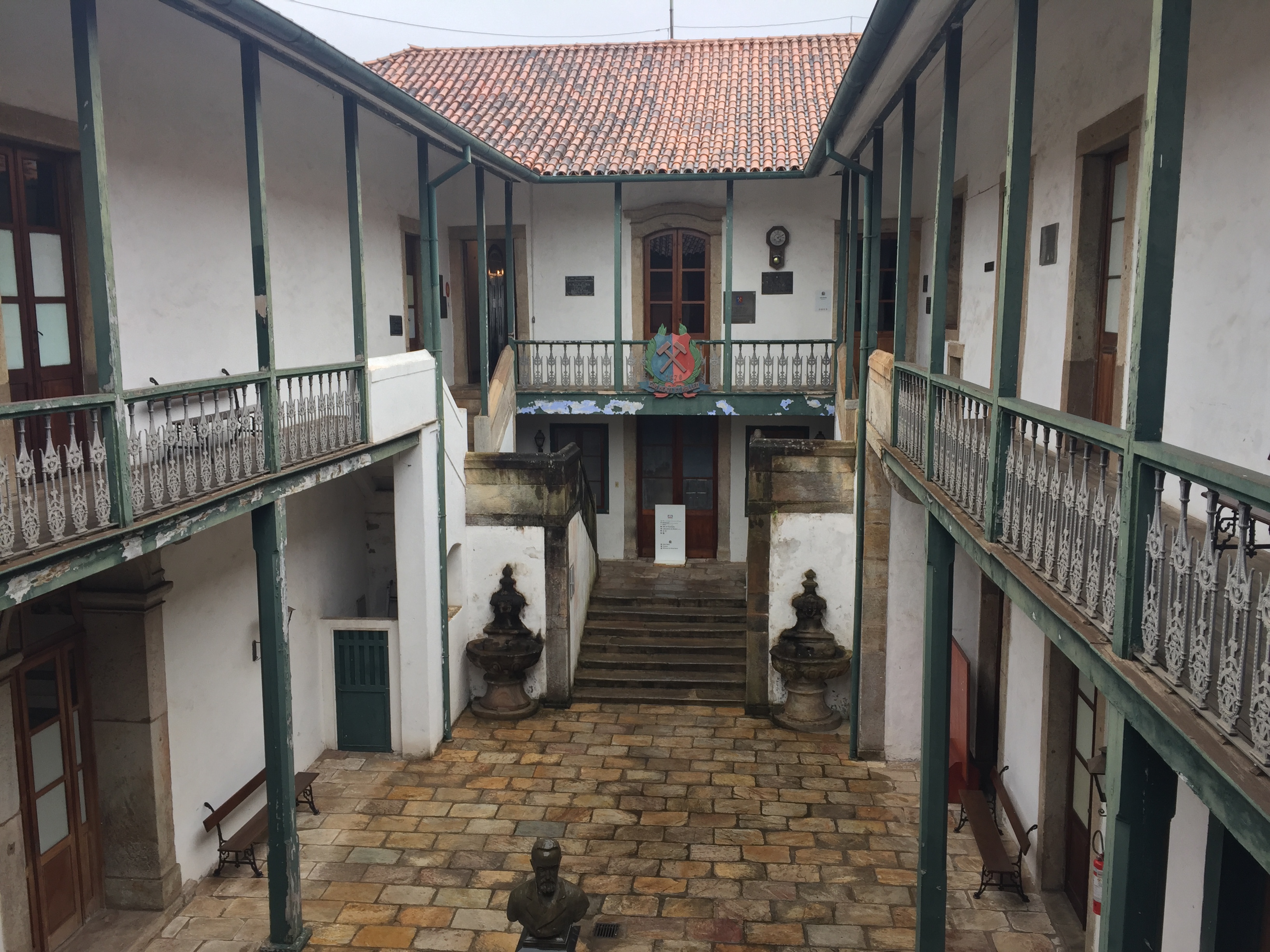
Ouro Preto has an important University and many of the students have played an important role in repopulating the town centre, something some of the other Brazilian Cities can learn from. An important consequence of this is that the town is not deserted at night and has a full range of shops in addition to those that support its mainly Brazilian tourist visitors. With the importance of mining in the region, the old governor’s palace, contains the University’s Escola de Minas and an enormous collection of minerals from Minas Gerais and around the world.
Date: 19/11/2018 to 21/11/2018
